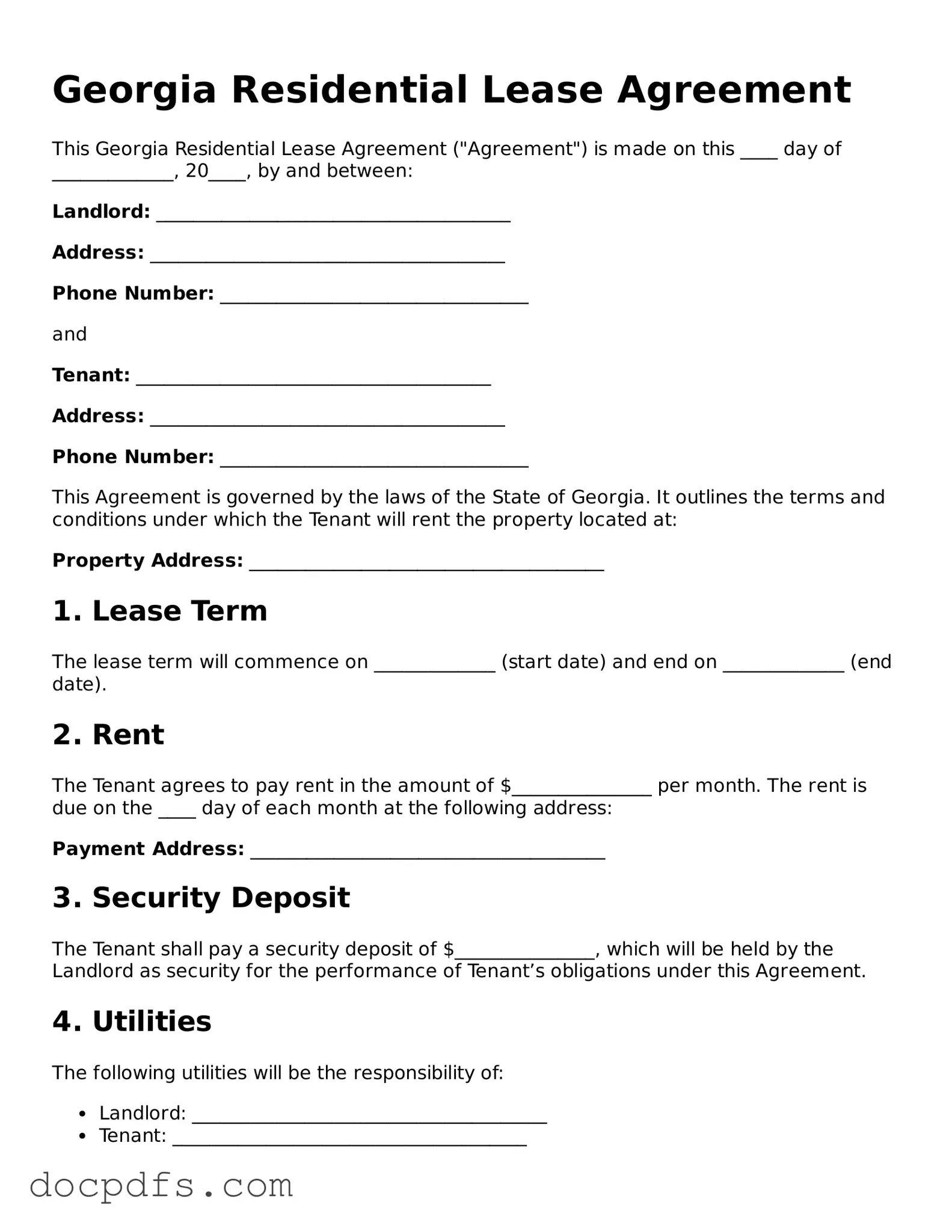The Georgia Lease Agreement form is a legal document that outlines the terms and conditions under which a landlord rents property to a tenant. This agreement specifies the rights and responsibilities of both parties, including rent amount, duration of the lease, and maintenance obligations.
What key elements should be included in the lease?
A comprehensive lease agreement should contain the following key elements:
-
Parties Involved:
Names and contact information of the landlord and tenant.
-
Property Description:
The address and specific details of the rental property.
-
Lease Term:
Start and end dates of the lease.
-
Rent Payment:
Amount due, payment method, and due date.
-
Security Deposit:
Amount required and conditions for its return.
-
Maintenance Responsibilities:
Who is responsible for repairs and upkeep.
How long is a typical lease term in Georgia?
In Georgia, lease terms can vary widely. Common durations include:
-
Month-to-month leases, which allow flexibility.
-
Fixed-term leases, typically lasting 6 or 12 months.
Both types have their advantages, depending on the needs of the landlord and tenant.
Can a landlord raise the rent during the lease term?
Generally, a landlord cannot raise the rent during the lease term unless the lease specifically allows for it. For month-to-month leases, landlords must provide proper notice, typically 30 days, before increasing the rent.
What happens if a tenant wants to break the lease early?
If a tenant wishes to break the lease early, they should first review the lease agreement for any clauses regarding early termination. Tenants may be liable for rent until a new tenant is found or may incur a penalty fee. Communication with the landlord is crucial to discuss potential options.
Is it necessary to have a written lease agreement?
While verbal agreements can be legally binding, having a written lease is highly recommended. A written document provides clear evidence of the terms agreed upon and helps prevent misunderstandings. It protects both the landlord and tenant by outlining their rights and responsibilities.
